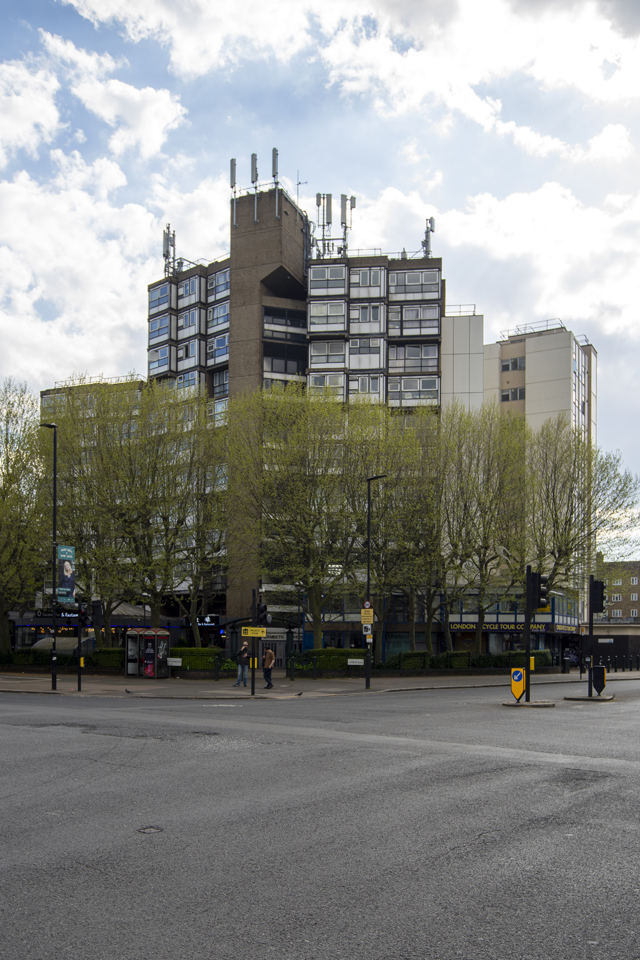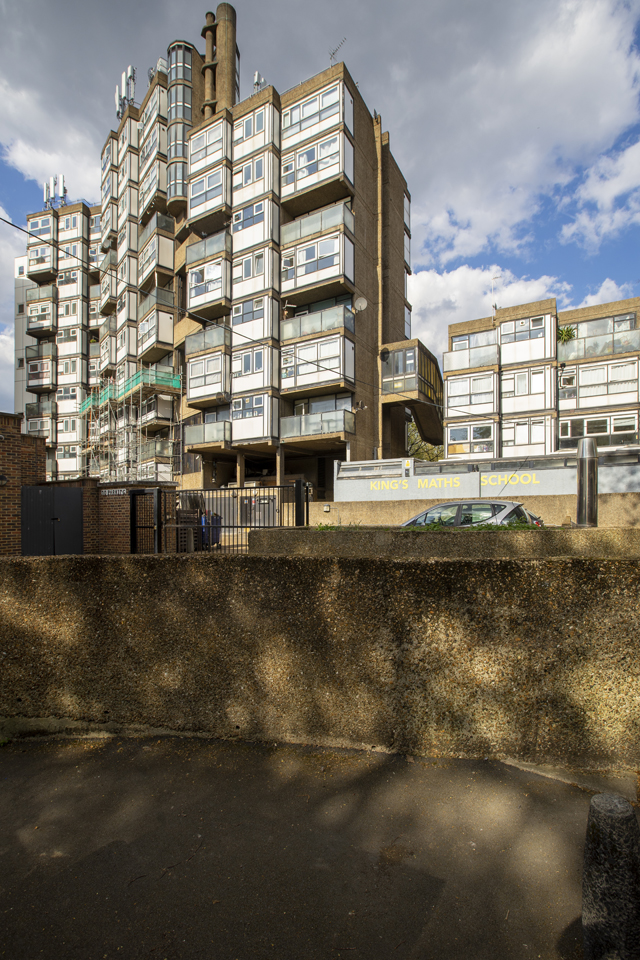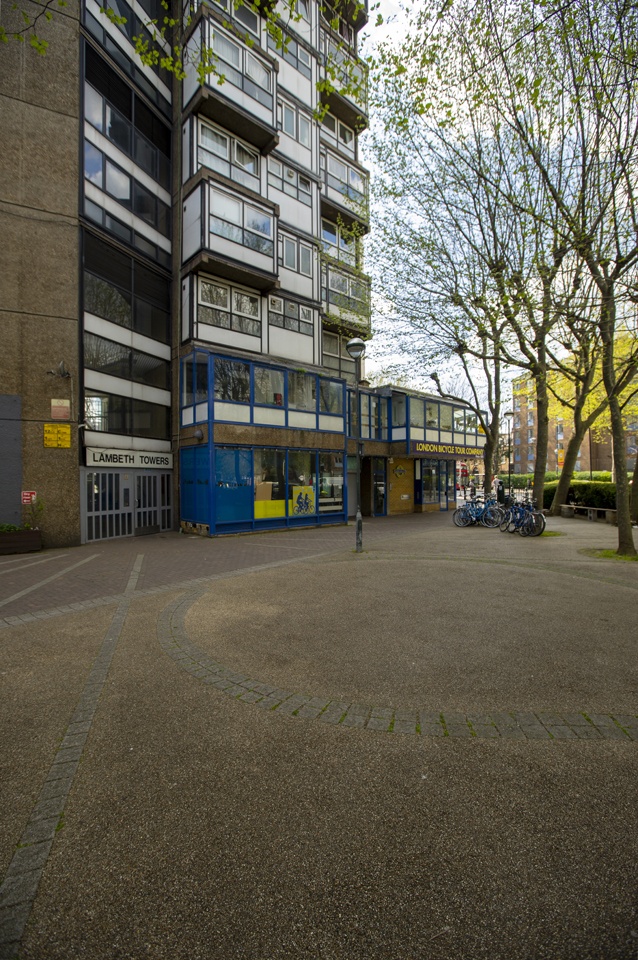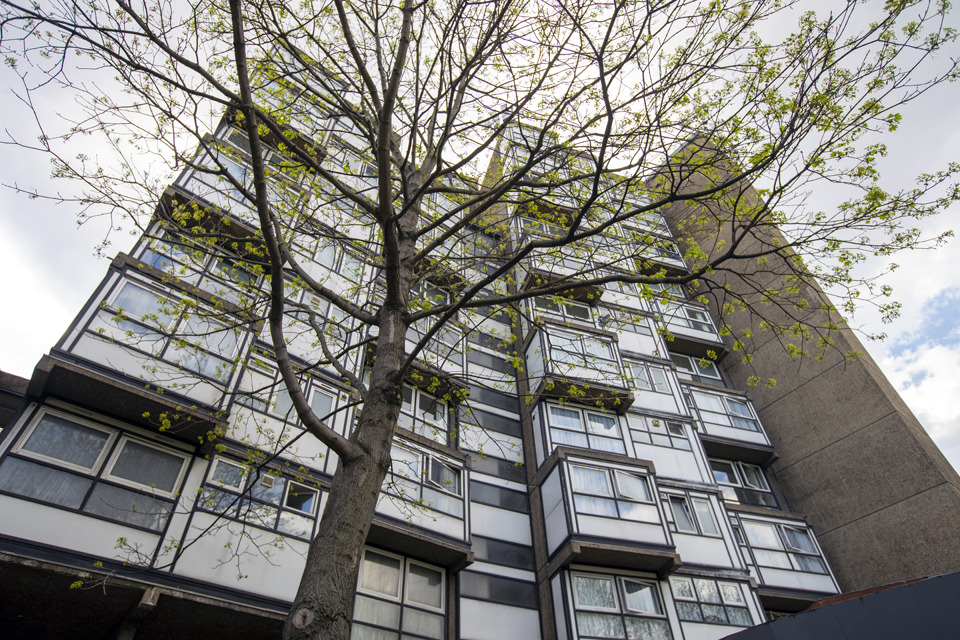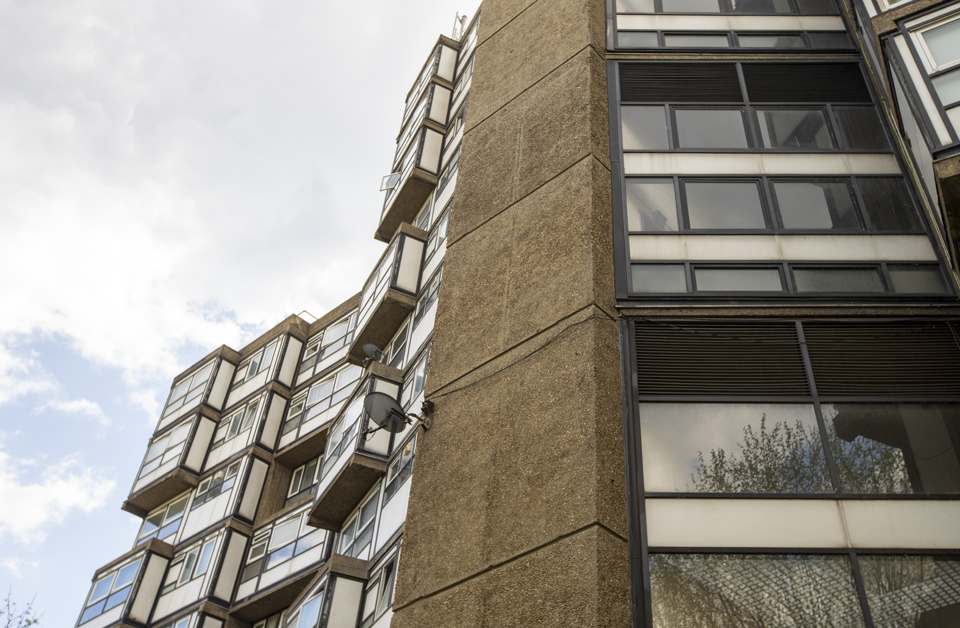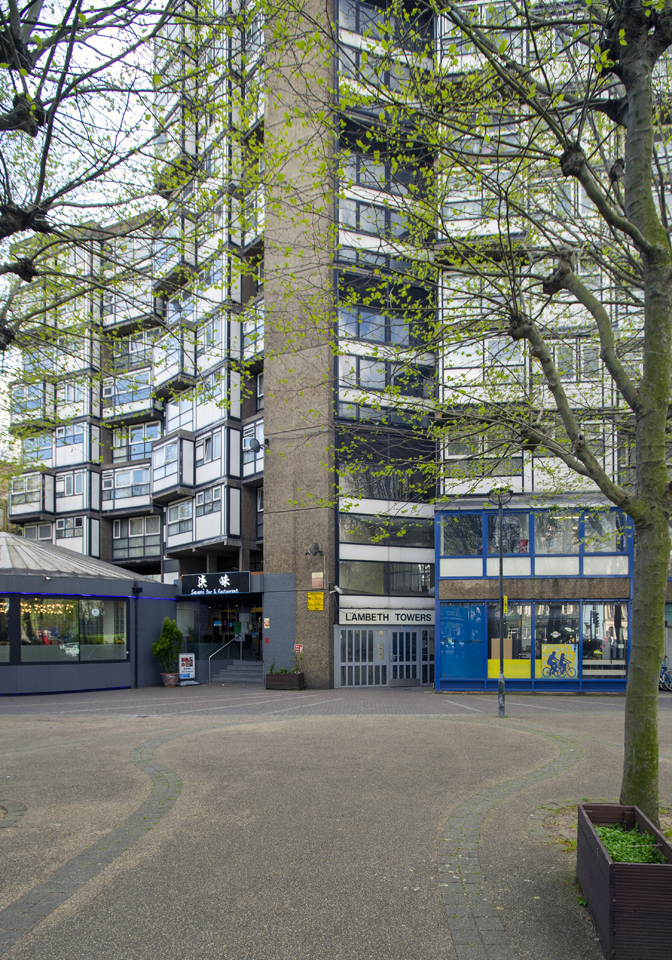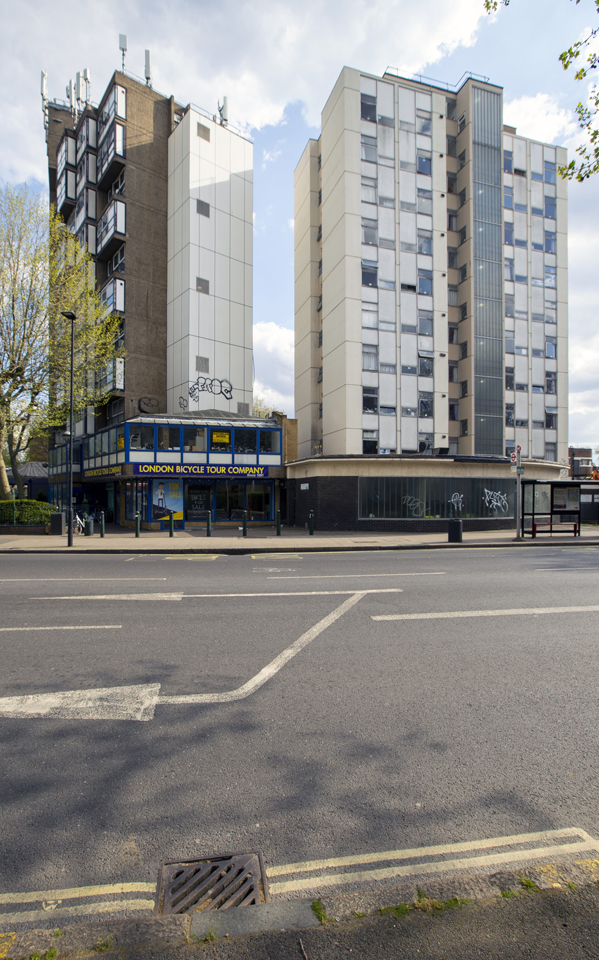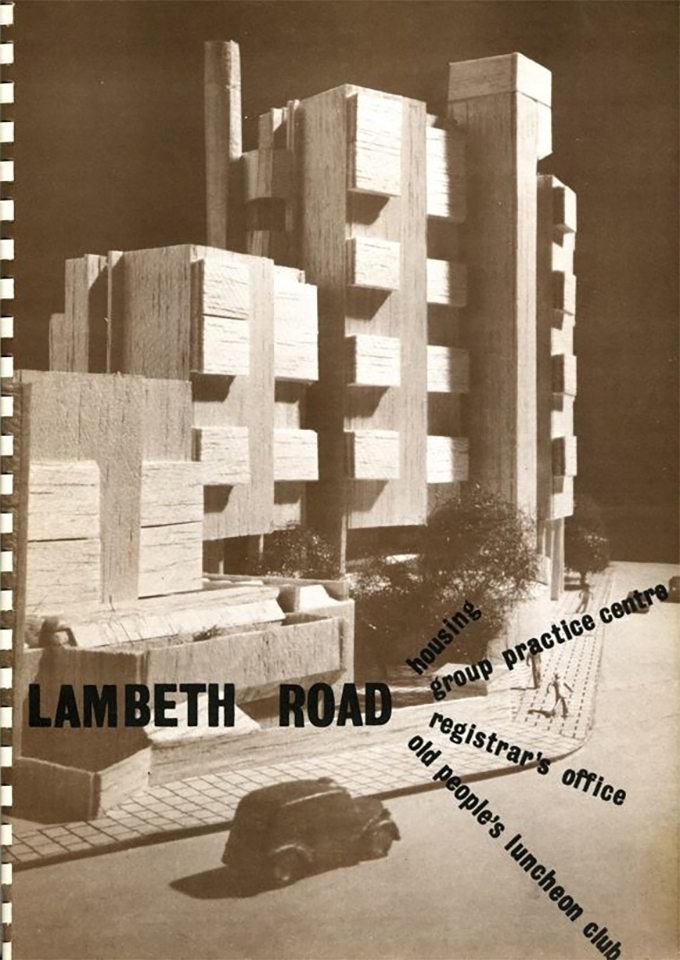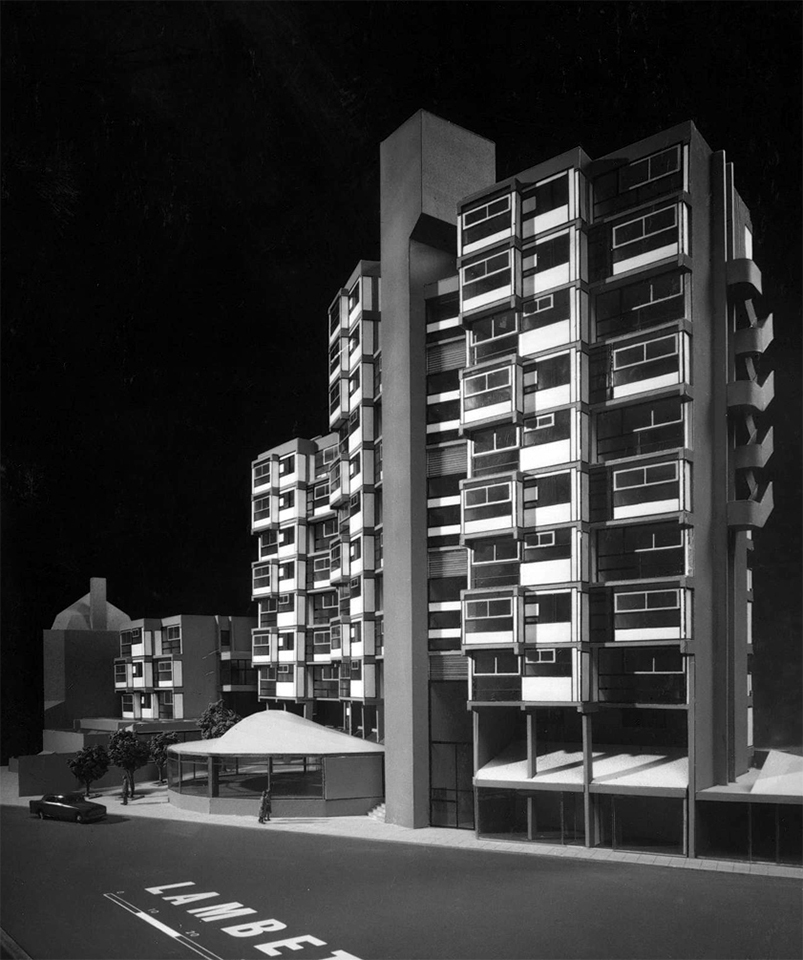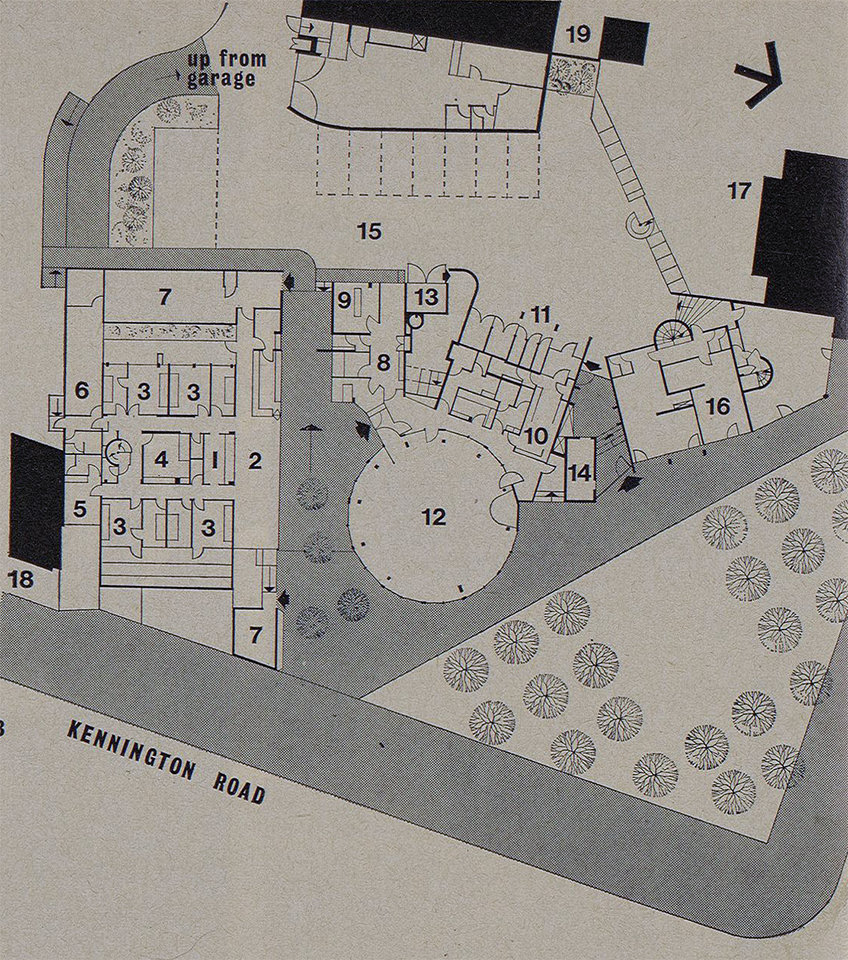Lambeth Towers
1972
George Finch’s recorded socialist ideals were given the chance to play out in his appointment to the Lambeth Borough Architect’s Department under Ted Hollamby. Lambeth Towers is probably his most well-regarded work in relation to his principles, though Brixton Leisure Centre also had strongly egalitarian aims in its organisation and access for all approach. Lambeth Towers is an irregular stack of dual aspect maisonettes, a long way from the cynical repetitive floor plans that characterise residential towers today. Alongside the housing, the council provided shops, a doctor’s group practice, a chiropody unit, registrar’s office and an old people’s lunch club (now a restaurant). The quality of Lambeth’s architectural output was celebrated in an exhibition of 1965, opened by Richard Crossman, Minister of Housing and Local Government, where models of Binfield Road (Edrich House) and Lambeth Road were presented. Edrich House was used as a model and versions of it were developed elsewhere in the Borough, but Lambeth Towers was a one off. The site was generally regarded as little value and had been rejected for housing earlier by the LCC, before it was put into use by Lambeth, who had been given the land for free. This gift, it was felt, could justify the more complicated programme and design. The primary objectives were to accommodate a small teaching practice connected to St. Thomas’ Hospital and the lunch club, the addition of the extra facilities was viewed as appropriate and seen to take full advantage of the awkward site with limited means of access and poor aspects to the rear. Structurally, the frame, floors and walls were all made from in-situ cast reinforced concrete, grit blasted in public areas. Externally, the infill panels were made from insulated timber. The maisonettes were entered from a central corridor on alternate floors and, descending to a lower level, each had a dual aspect within a cranked plan that optimised daylight provision and negotiated the corner site. The range in heights of adjoining parts of the block also gave a profile that addressed the corner of Kennington Road and Lambeth Road. The public space on the corner that now addresses the building was not part of the original offer and seeing the original ground floor planning, apparently without any discernible order, reveals the skill of Finch in teasing out such a remarkable scheme in such restricted space.
